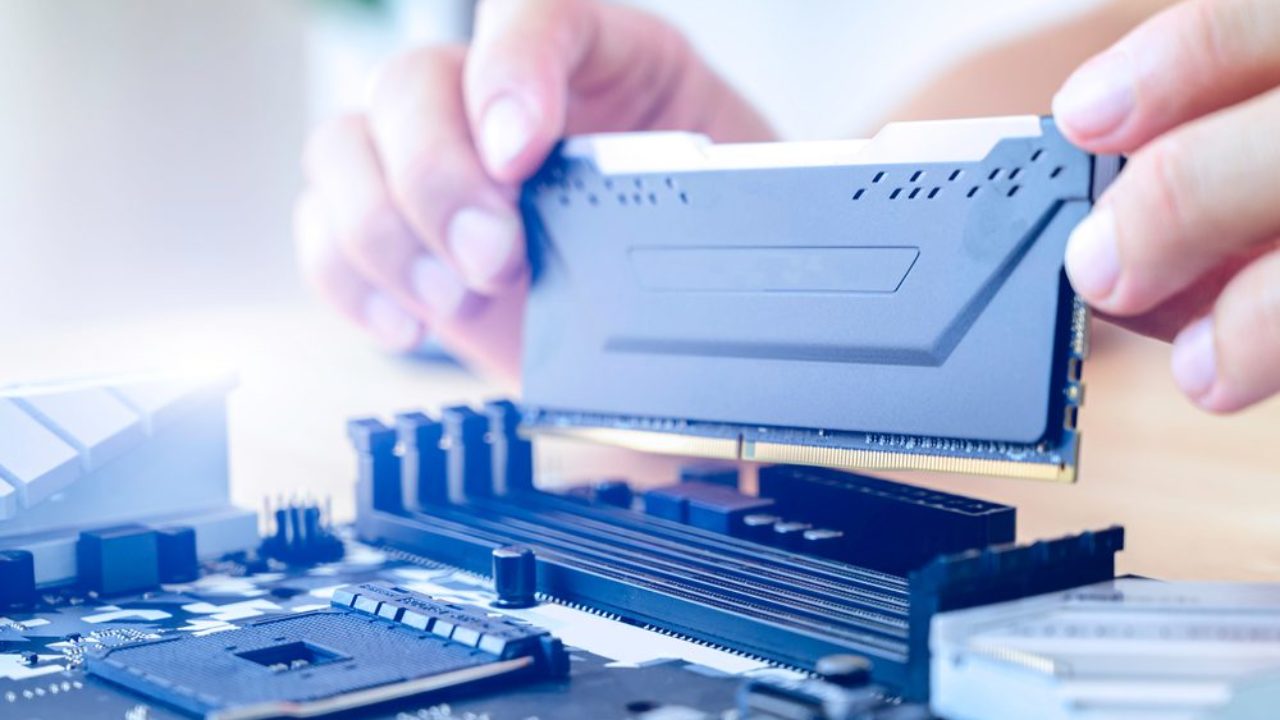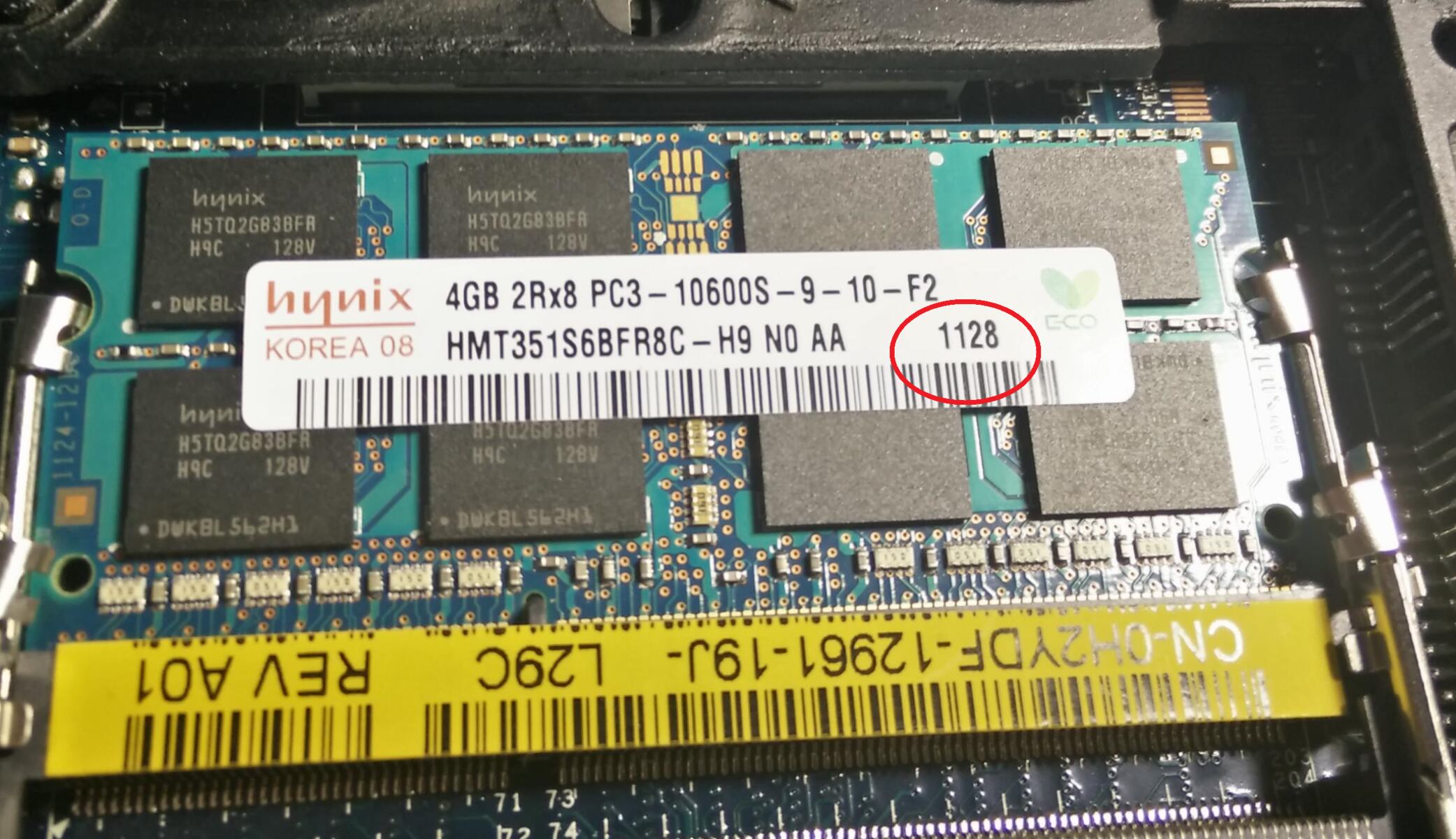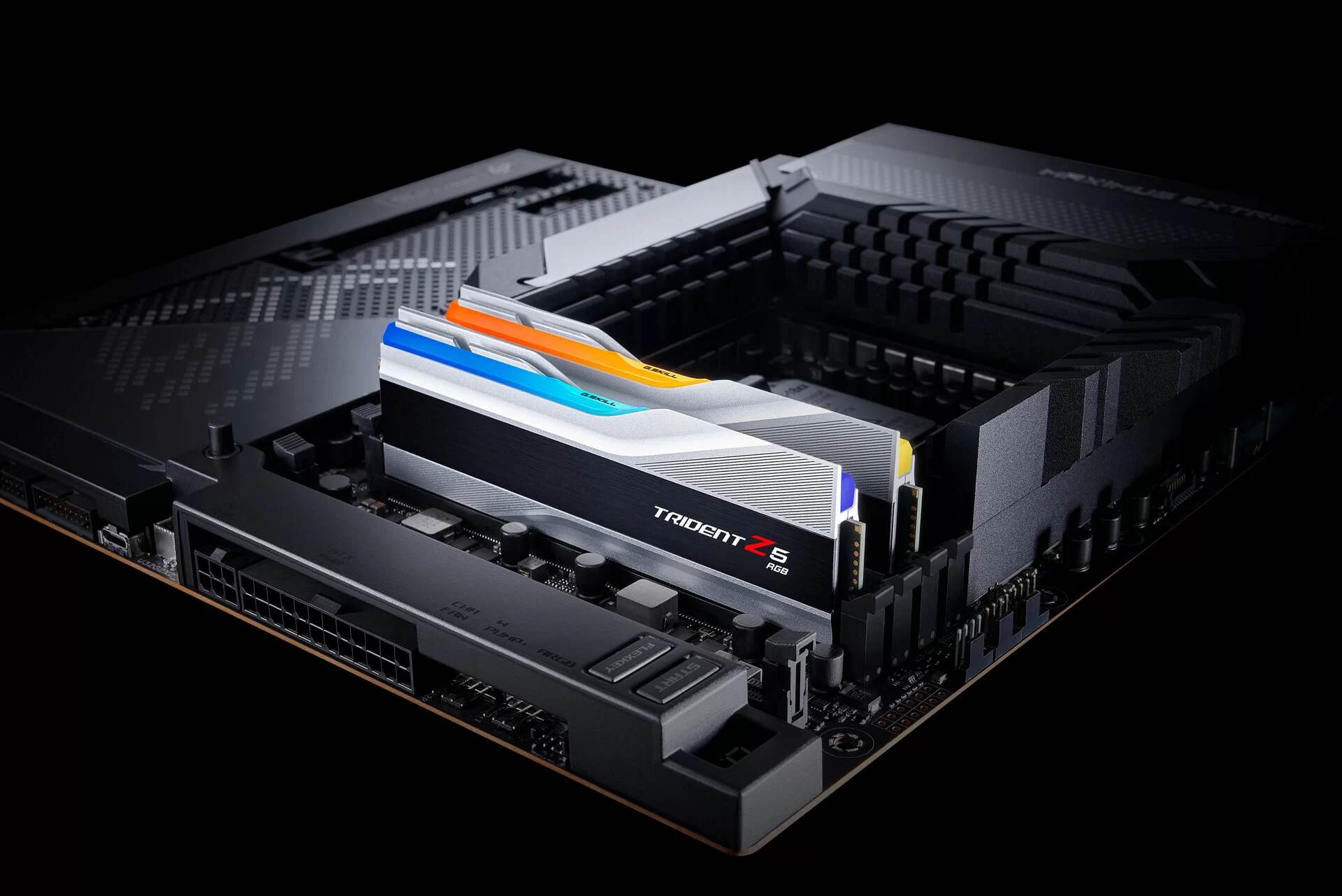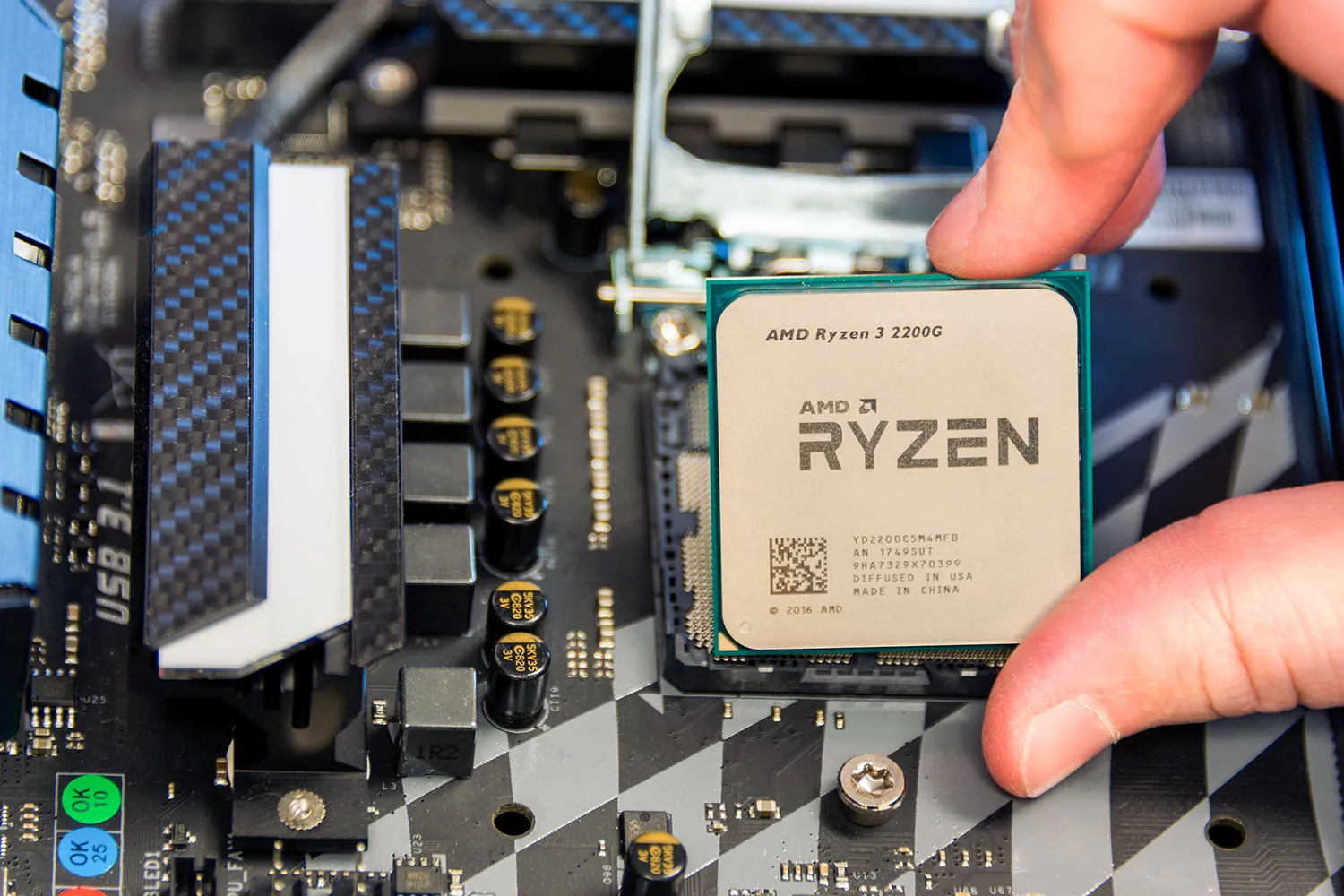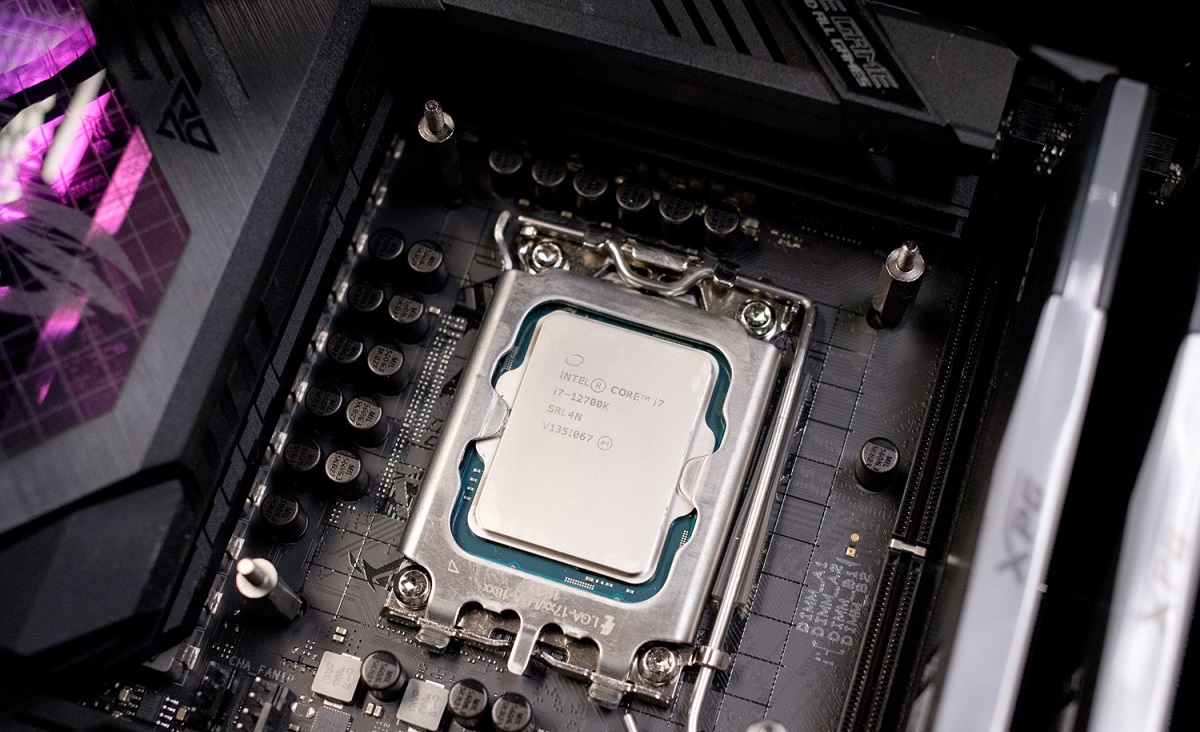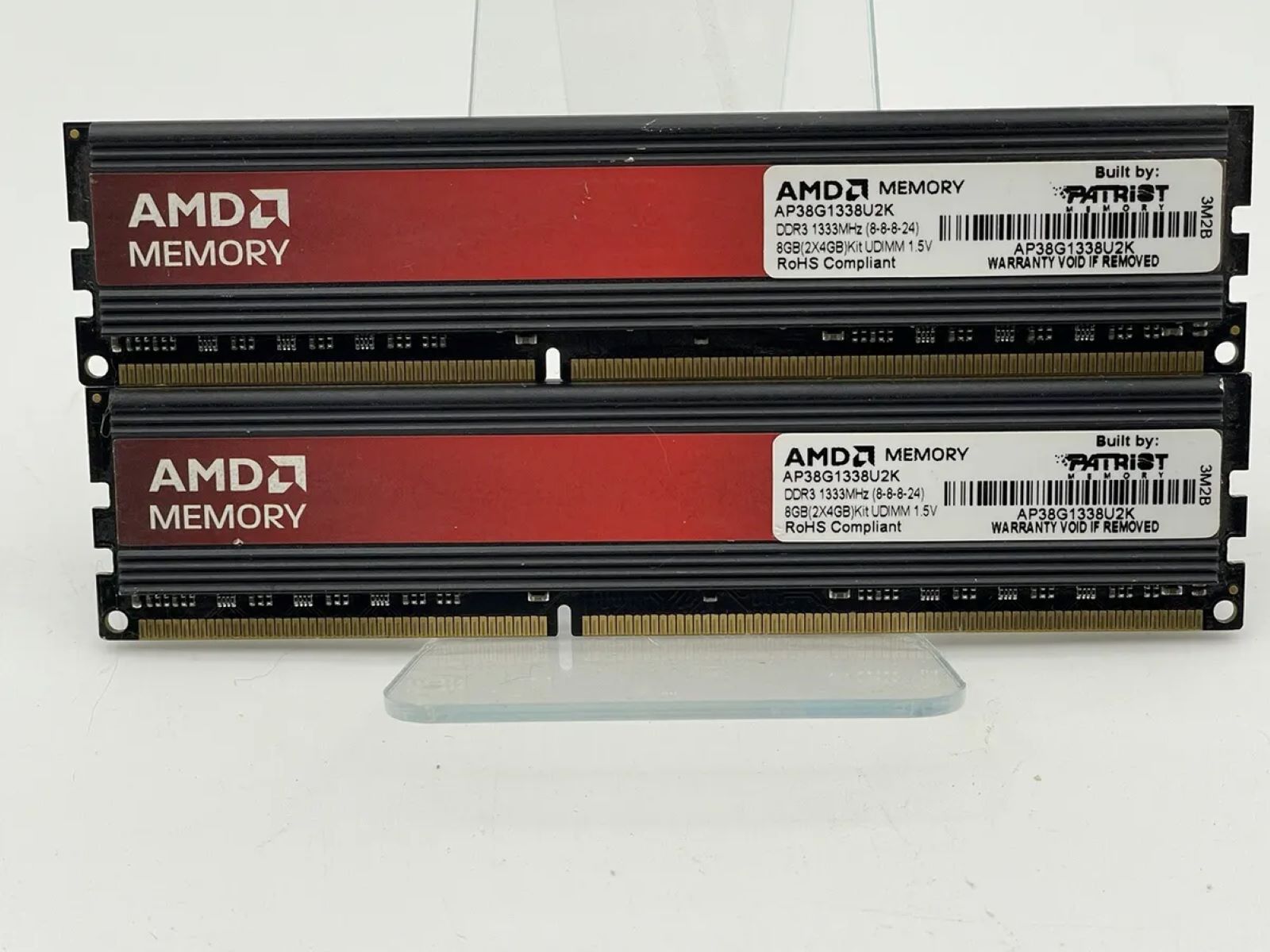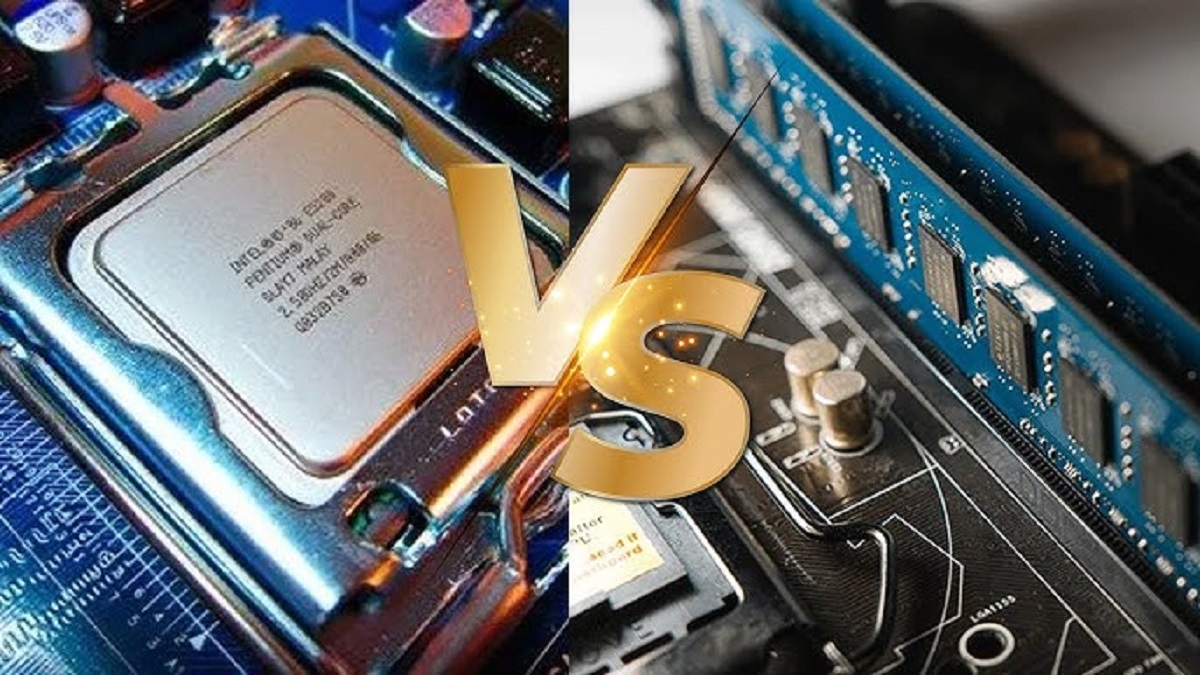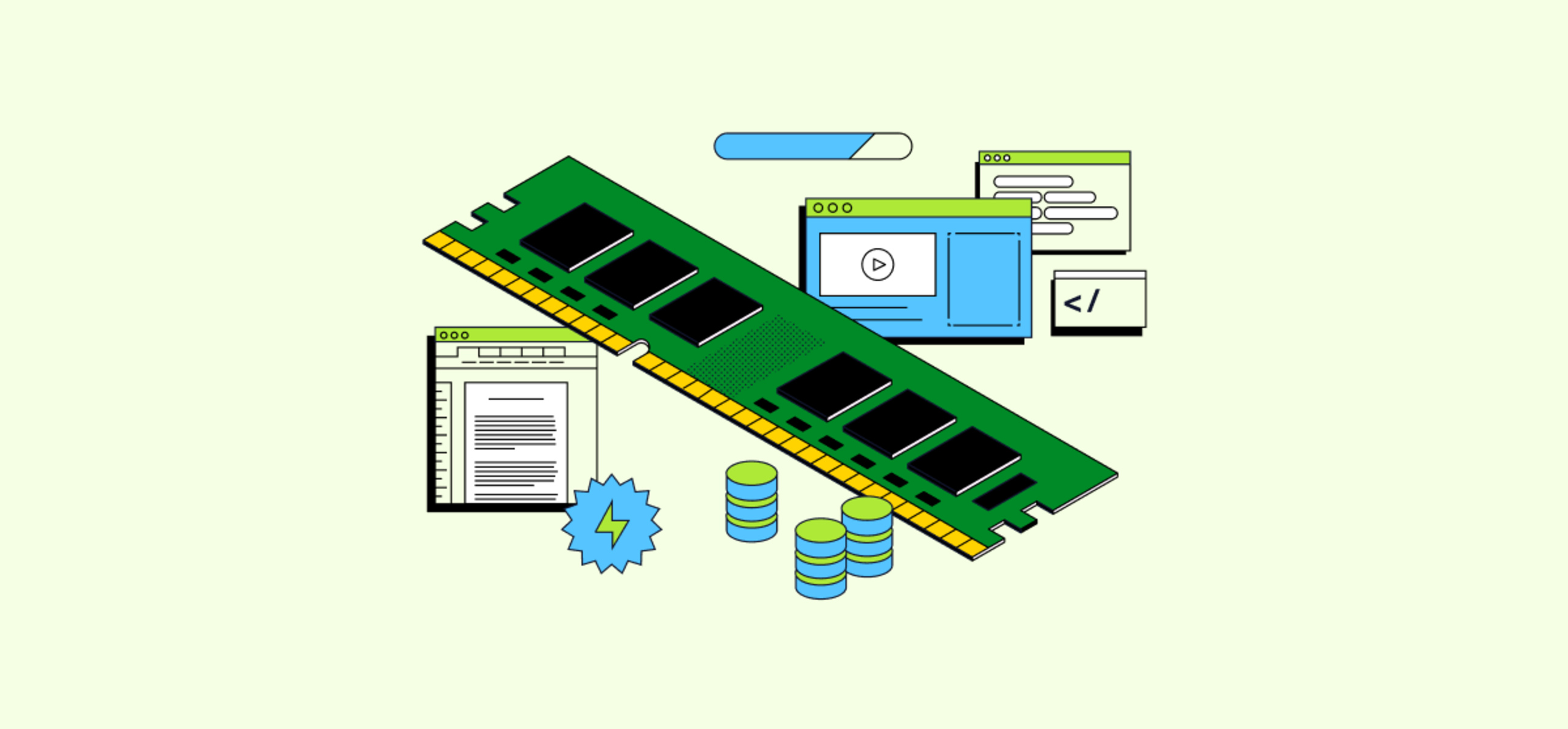Overview
When it comes to understanding the inner workings of a computer system, two key components stand out: RAM (Random Access Memory) and the processor (CPU). These components play vital roles in the overall performance and functionality of a computer. While they are distinct from each other, they work in tandem to ensure smooth operations and efficient multitasking.
RAM and the processor are often confused as being the same thing, but they serve different functions within a computer system. RAM is a form of temporary storage that allows the system to access data quickly, while the processor is responsible for executing instructions and performing calculations.
Think of RAM as a desk where you can place all the necessary documents and files you need to work on. The more RAM you have, the more documents you can access simultaneously without slowing down the system. On the other hand, the processor is like the worker sitting at the desk, processing the information and carrying out tasks based on the instructions given.
Without proper understanding of RAM and the processor, computer users may find themselves encountering issues such as slow performance, lag, and system crashes. Consequently, it’s essential to grasp the key differences, functions, and interdependence of these two components to optimize computer performance and enhance user experience.
Definition
RAM, which stands for Random Access Memory, is a type of computer memory that is used to temporarily store data that the computer processor needs to access quickly. It provides a high-speed storage area for data that the processor can readily retrieve, improving the overall performance of the computer system.
The processor, also known as the Central Processing Unit (CPU), is the brain of the computer. It is responsible for executing instructions, performing calculations, and controlling the flow of data within the computer system. The processor carries out these tasks by manipulating the data stored in RAM and other storage devices.
In simple terms, RAM acts as a temporary storage space for data that is currently being actively processed, while the processor is the component that actually performs the operations on that data. Together, RAM and the processor work in sync to ensure that the computer can handle multiple tasks efficiently and quickly respond to user commands.
RAM and the processor are both crucial components for the operation of a computer system, but it’s important to note that they serve different purposes. RAM provides the storage space for data, allowing the processor to access the information it needs rapidly. The processor, on the other hand, processes the data and performs the necessary computations to carry out the tasks at hand.
Understanding the definitions of RAM and the processor is essential for computer users to make informed choices when it comes to upgrading their systems or troubleshooting performance issues. By having a clear understanding of these components, users can better optimize their computer’s performance and ensure that it meets their specific needs.
Function
RAM and the processor have distinct functions within a computer system, but they work together to ensure smooth operations and efficient multitasking.
The primary function of RAM is to provide temporary storage for data that is actively being used by the processor. When you open a program or load a file, the relevant data is transferred from the hard drive into RAM, allowing for faster access and manipulation by the processor. RAM acts as a bridge between the slower, long-term storage of the hard drive and the fast-paced operations of the processor.
On the other hand, the processor is responsible for executing instructions, performing calculations, and managing the flow of data within the computer system. It carries out these tasks by manipulating the data stored in RAM and other storage devices. The processor receives instructions from the computer’s operating system and, based on those instructions, performs the necessary operations on the data stored in RAM.
To put it simply, the function of RAM is to provide quick and easy access to data for the processor, while the function of the processor is to process and manipulate that data to carry out the tasks at hand. Without sufficient RAM, the computer would have to rely more heavily on slower storage devices, resulting in slower performance and longer response times. Similarly, without a powerful processor, even with ample RAM, the computer would struggle to perform complex tasks and calculations efficiently.
Overall, the function of RAM and the processor is to work together harmoniously to ensure that the computer can handle multiple tasks simultaneously, deliver fast response times, and provide a smooth user experience. Understanding the functions of these components is crucial for computer users to optimize their systems, choose appropriate hardware configurations, and troubleshoot any performance issues that may arise.
Main Components
In order to fully understand the differences between RAM and the processor, it’s important to delve into their main components and how they contribute to the overall functioning of a computer system.
RAM is composed of several main components, including integrated circuits (ICs) and memory modules. These ICs store the data that the computer system needs to access quickly. The memory modules, also known as RAM sticks, are inserted into slots on the computer’s motherboard and provide the physical space for the ICs to reside and operate.
The processor, on the other hand, consists of various components that work together to execute instructions and perform calculations. The key components of a processor include the control unit, arithmetic logic unit (ALU), registers, and cache.
The control unit is responsible for managing the flow of data and instructions within the computer system. It coordinates the activities of the other components and ensures that the instructions are executed in the correct order.
The ALU is the component that performs the actual mathematical and logical operations on the data. It can perform tasks such as addition, subtraction, multiplication, and comparison operations.
Registers are small, high-speed storage spaces that hold data that needs to be quickly accessed by the processor. Registers store temporary results, memory addresses, and other important information that the processor needs during its operations.
Cache is a type of high-speed memory located on the processor itself. It serves as a buffer between the processor and the slower RAM. Cache stores frequently accessed data and instructions, allowing for faster access and reducing the need for the processor to wait for data retrieval from RAM.
These main components of both RAM and the processor work together to ensure the efficient functioning and performance of a computer system. RAM provides the temporary storage space for data that the processor needs to access quickly, while the components of the processor carry out the necessary computations and operations.
By understanding the main components of RAM and the processor, computer users can make informed decisions when it comes to upgrading their systems or troubleshooting performance issues. Investing in faster RAM modules or a more powerful processor can greatly enhance the overall performance and functionality of a computer.
Working Principle
The working principle of RAM and the processor revolves around seamless data transfer and efficient processing. Understanding how these components function can provide valuable insights into the inner workings of a computer system.
RAM operates on the principle of random access, allowing the computer system to read from or write to any location in RAM with equal speed. This is achieved through the use of memory cells, which are arranged in a grid-like structure. Each memory cell stores a binary value (either 0 or 1) and has a unique address that the processor uses to access the data stored within.
When data is to be stored in RAM, the processor sends the data and the corresponding memory address to the RAM module. The data is then stored in the memory cell located at that specific address. Conversely, when the processor needs to retrieve data from RAM, it sends the memory address to the RAM module, which then retrieves the data stored at that address and sends it back to the processor.
The working principle of the processor is centered around executing instructions, performing calculations, and controlling the flow of data within the computer system. The processor contains a clock that generates electrical pulses, which synchronize the operations of its various components.
Instructions, in the form of binary code, are fetched from the computer’s memory. The control unit interprets these instructions and sends signals to different parts of the processor to perform the necessary operations. The ALU performs arithmetic and logical operations, such as adding numbers or comparing values, based on the instructions received.
The processor also includes temporary storage spaces called registers, which hold data and instructions during processing. Registers are used for quick access to data and to store intermediate results. Additionally, cache memory, located on the processor itself, is used to store frequently accessed data and instructions, reducing the time it takes for the processor to retrieve them from the slower RAM.
RAM and the processor work together in a continuous cycle. The processor fetches instructions and data from RAM, performs the necessary operations, and writes the results back to RAM. This cycle repeats as the processor continues to execute instructions and process data.
By understanding the working principle of RAM and the processor, users can gain insights into how these components contribute to the overall functioning of a computer system. This knowledge can be valuable for troubleshooting performance issues, optimizing system configurations, and making informed decisions when upgrading hardware components.
Importance
The importance of RAM and the processor in a computer system cannot be overstated. These two components play crucial roles in determining the overall performance, speed, and efficiency of a computer.
RAM is essential for ensuring smooth multitasking and quick access to data. With more RAM, a computer can handle running multiple programs simultaneously without experiencing slowdowns or crashes. This is especially important for tasks that require a lot of memory, such as video editing, gaming, and running virtual machines. Insufficient RAM can lead to performance issues, as the computer may have to rely on slower storage devices such as hard drives, resulting in decreased efficiency and response times.
The processor, as the brain of the computer, is responsible for executing instructions and performing calculations. A powerful processor can handle complex computational tasks quickly and efficiently. This is crucial for demanding applications like 3D rendering, scientific simulations, and video encoding. A slower processor can result in longer waiting times, lag, and overall decreased performance.
Having an adequate amount of RAM and a powerful processor is particularly important for specific industries and professions. For example, in graphic design and video production, where large files need to be rendered and edited in real-time, having ample RAM and a fast processor is essential for a smooth workflow. In engineering and scientific research, powerful processors are vital for performing complex simulations and calculations.
Another aspect of the importance of RAM and the processor is their impact on system stability. Adequate RAM allows the computer to allocate resources properly, reducing the likelihood of crashes and freezing. A powerful processor ensures that the system can handle tasks efficiently and minimize the risk of bottlenecks or slowdowns.
Furthermore, as technology advances and software becomes more demanding, having sufficient RAM and a powerful processor becomes even more critical. Upgrading or investing in these components can extend the lifespan of a computer and ensure compatibility with future software updates and requirements.
Ultimately, the importance of RAM and the processor lies in their ability to provide smooth and efficient functioning of a computer system. When these components are optimized, users can experience faster response times, improved multitasking capabilities, and enhanced overall performance.
Interdependence
RAM and the processor are interdependent components within a computer system, relying on each other to ensure optimal performance and smooth operations.
The interdependence between RAM and the processor can be seen in their constant interaction and data exchange. When a program or file is opened, relevant data is transferred from the hard drive into RAM. The processor then accesses this data from RAM to carry out the necessary operations. Conversely, when the processor needs to write data back to the storage device, it sends the data to RAM, which then transfers it to the appropriate storage location.
RAM plays a crucial role in improving the efficiency of the processor. By providing quick and easy access to data, RAM enables the processor to retrieve information rapidly and carry out computations without delays. Insufficient RAM can result in the processor having to wait for data to be transferred from slower storage devices, hindering overall system performance.
Similarly, the processor’s speed and capabilities determine how quickly tasks can be executed and calculations performed. A powerful processor can handle complex operations more efficiently, reducing the time required for computations and improving the system’s overall responsiveness. However, even with a powerful processor, without sufficient RAM, the system may still experience slowdowns and bottlenecks, as the processor needs to wait for data to be retrieved from slower storage devices.
The interdependence between RAM and the processor can also impact multitasking capabilities. With ample RAM, the computer can run multiple programs simultaneously, allowing tasks to be executed concurrently. The processor’s speed and efficiency determine how effectively it can handle these tasks. Conversely, if the RAM capacity is limited, the system may struggle to allocate enough memory for simultaneous execution of programs, leading to sluggish performance and even crashes.
Understanding the interdependence between RAM and the processor is essential for optimizing system performance and making informed decisions when upgrading hardware. Striking a balance between the two components is crucial to ensure that the computer system can handle the demands of modern software and perform tasks efficiently.
Overall, RAM and the processor are interconnected components that rely on each other to provide the necessary resources and computational power for a computer system. By recognizing their interdependence, users can make informed choices when configuring their systems and ensure a harmonious balance between these two vital components.
Key Differences
While RAM and the processor are both essential components of a computer system, they differ in terms of their purpose, function, and characteristics.
One key difference between RAM and the processor lies in their role within the system. RAM, as the acronym suggests, is a form of memory that provides temporary storage for data that the processor needs to access quickly. It acts as a bridge between the slower, long-term storage of the hard drive and the fast-paced operations of the processor. On the other hand, the processor is responsible for executing instructions, performing calculations, and managing the flow of data within the computer system.
Another notable difference is their function. RAM serves as a temporary storage space for data, allowing the processor to access the information it needs rapidly. It provides the computer with the capability to efficiently handle multiple tasks and increases the speed and responsiveness of the system. In contrast, the processor performs the actual operations on the data stored in RAM. It carries out calculations, executes instructions, and manages the flow of data, ensuring that tasks are completed accurately and in a timely manner.
Considered in terms of physical characteristics, RAM and the processor also differ. RAM is a separate component that usually comes in the form of modules, such as RAM sticks, which are installed onto the computer’s motherboard. These modules vary in capacity, speed, and type, and can be upgraded or replaced to increase overall system performance. Conversely, the processor is a single chip that is usually soldered onto the motherboard and cannot be easily replaced or upgraded.
Additionally, the speed of RAM and the processor are measured and represented differently. The speed of RAM is typically indicated in terms of its frequency, such as megahertz (MHz) or gigahertz (GHz), which denotes the number of cycles per second that the RAM can operate at. In contrast, the speed of the processor is measured in clock cycles per second, referred to as the clock speed, and is usually expressed in GHz. The higher the clock speed, the more instructions the processor can execute in a given time period.
Understanding the key differences between RAM and the processor is crucial for optimizing system performance, troubleshooting issues, and making informed decisions when upgrading or configuring a computer system. By recognizing the distinct roles and characteristics of these components, users can ensure that they choose appropriate hardware configurations and maximize the efficiency of their systems.
Impact on Performance
RAM and the processor have a significant impact on the performance of a computer system. The capabilities and specifications of these components directly influence the speed, efficiency, and overall responsiveness of the system.
RAM plays a crucial role in determining the performance of a computer. Sufficient RAM allows for faster data access and retrieval, enabling the processor to quickly retrieve the information it needs to execute instructions. Increased RAM capacity also enables the system to handle multiple programs and tasks simultaneously without experiencing significant slowdowns. Insufficient RAM can cause the system to rely on slower storage devices, such as hard drives, for temporary data storage, resulting in slower performance and increased response times.
The processor, being the “brain” of the computer, has a profound impact on system performance as well. A faster and more powerful processor can handle complex calculations, execute instructions, and process data more efficiently. This leads to quicker performance and improved overall responsiveness. Conversely, a slower processor may struggle to cope with demanding tasks and can result in a system that feels sluggish and unresponsive.
The performance impact of both RAM and the processor is closely interconnected. RAM provides the temporary storage for data that the processor needs to access quickly. Insufficient RAM can limit the amount of data that can be stored, resulting in the processor having to wait for data retrieval from slower storage devices, hindering overall system speed and responsiveness. Conversely, a powerful processor can process information quickly, but without enough RAM to hold the required data, the processor may not be able to perform at its full potential.
In addition to the individual impact of RAM and the processor, their combined synergy is crucial for optimal performance. Having ample and high-speed RAM, along with a powerful processor, allows for smooth multitasking, faster data processing, and enhanced overall system performance.
It’s important to note that the impact on performance will also depend on the specific tasks being performed. For resource-intensive activities such as gaming, video editing, and 3D rendering, a combination of abundant RAM and a high-performance processor is crucial to ensure smooth operations. In contrast, for everyday tasks such as web browsing and word processing, modest amounts of RAM and a standard processor may be sufficient.
Understanding the impact of RAM and the processor on performance is essential for optimizing system configurations, making hardware choices, and troubleshooting performance issues. By ensuring a balance between these components and their capabilities, users can maximize the speed, efficiency, and overall performance of their computer systems.
Upgrading Options
Upgrading RAM and the processor can be effective ways to enhance the performance and capabilities of a computer system. Depending on specific needs and budget, there are various upgrading options available for these components.
When it comes to upgrading RAM, there are two primary options: increasing the capacity and upgrading the speed. Increasing the RAM capacity involves adding more RAM modules or replacing existing modules with higher-capacity ones. This allows the system to store and access more data simultaneously, resulting in improved multitasking capabilities and faster performance. Upgrading the speed of the RAM involves replacing existing modules with ones that operate at a higher frequency. Faster RAM can provide quicker data transfers and retrieval, reducing latency and improving overall system responsiveness.
Upgrading the processor generally involves replacing the existing CPU with a more powerful one. When choosing a new processor, it’s essential to ensure compatibility with the motherboard socket type. Upgrading the processor can significantly enhance the system’s overall speed and performance. A more powerful processor can handle complex calculations and tasks more efficiently, resulting in faster response times and improved multitasking capabilities.
It’s important to note that upgrading the processor may also have implications for the motherboard and other components. Newer processors may require a compatible chipset and updated BIOS to ensure proper functionality. Therefore, it’s recommended to research and consult the motherboard manufacturer’s specifications and compatibility lists before proceeding with a processor upgrade.
When considering upgrading options, it’s crucial to assess the specific needs and requirements of the intended usage. Power users, such as gamers, video editors, and professionals working with resource-intensive applications, may benefit from higher-capacity RAM and powerful processors. Casual users performing everyday tasks may find that modest RAM upgrades or incremental processor upgrades provide sufficient performance improvements.
Budget constraints may also play a role in selecting upgrading options. RAM upgrades are generally more cost-effective compared to processor upgrades. Adding more RAM modules or replacing them with higher-capacity ones is often a more accessible and affordable option, providing noticeable performance improvements. Processor upgrades, on the other hand, tend to be more costly, especially when opting for top-of-the-line models.
It’s essential to consider the compatibility of hardware components when planning for upgrades. Ensure that the chosen RAM modules or processors are compatible with the motherboard and other system components to avoid any issues or incompatibilities.
Overall, upgrading options for RAM and the processor offer opportunities to improve system performance and meet specific usage requirements. Assessing needs, budget constraints, and compatibility are key factors to consider when exploring these upgrading options.
Conclusion
In conclusion, RAM and the processor are vital components of a computer system, working in tandem to ensure optimal performance and efficiency. While they have distinct roles and functions, their interdependence is crucial for overall system functionality.
RAM provides temporary storage for data that the processor needs to access quickly. It improves multitasking capabilities, enhances data access speed, and reduces reliance on slower storage devices. The processor, as the brain of the computer, executes instructions, performs calculations, and manages data flow. It determines how efficiently tasks are executed and the overall speed of the system.
The key differences between RAM and the processor lie in their purpose, function, and characteristics. RAM serves as temporary storage, while the processor performs operations on the data. RAM is a separate module, while the processor is a single chip. RAM speed is measured in frequency, while the processor’s speed is measured in clock cycles per second.
The impact on performance is significant for both RAM and the processor. Sufficient RAM capacity and speed enable faster data access and retrieval, improving overall system responsiveness. A powerful processor ensures efficient execution of tasks and reduces processing time. Both components rely on each other, as RAM provides the necessary data to the processor, and the processor processes the data stored in RAM.
Upgrading options for RAM and the processor offer opportunities to enhance system performance. Increasing RAM capacity and upgrading RAM speed provide faster data access and improved multitasking capabilities. Upgrading the processor enhances computational power and overall system speed. However, compatibility, specific needs, and budget constraints should be considered when planning upgrades.
In summary, understanding the roles, differences, and interdependence of RAM and the processor is essential for optimizing system performance, troubleshooting issues, and making informed decisions when configuring or upgrading a computer system. By ensuring a balance between these components and their capabilities, users can maximize the speed, efficiency, and overall performance of their computer systems.







